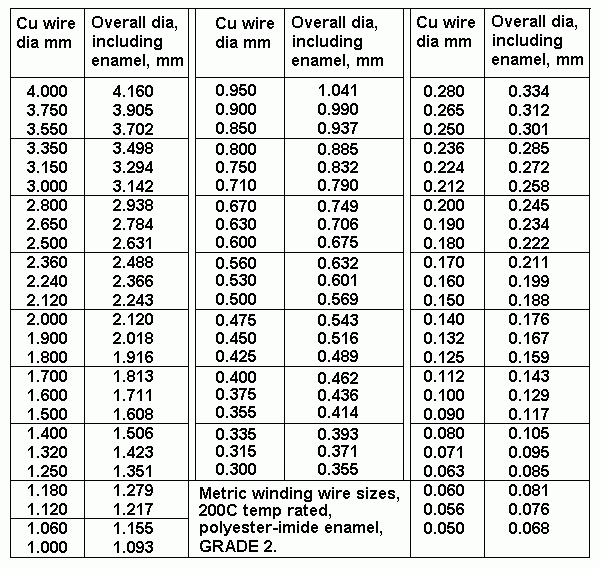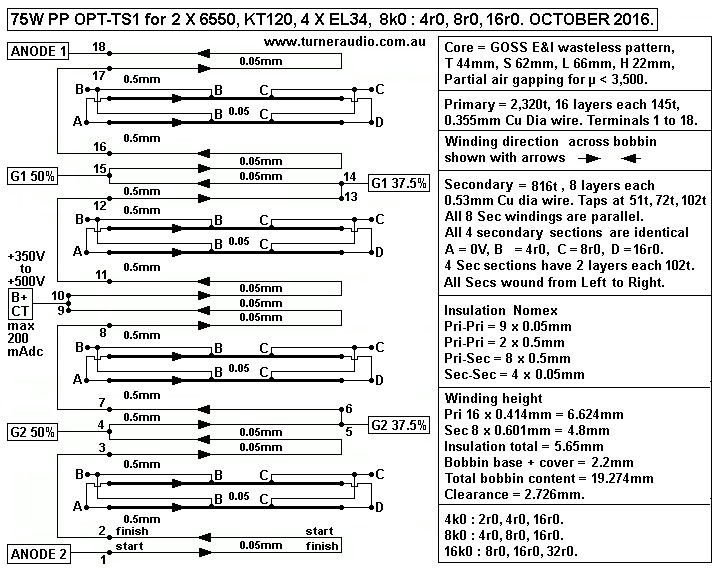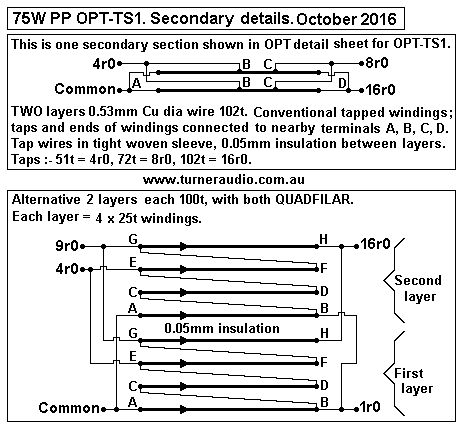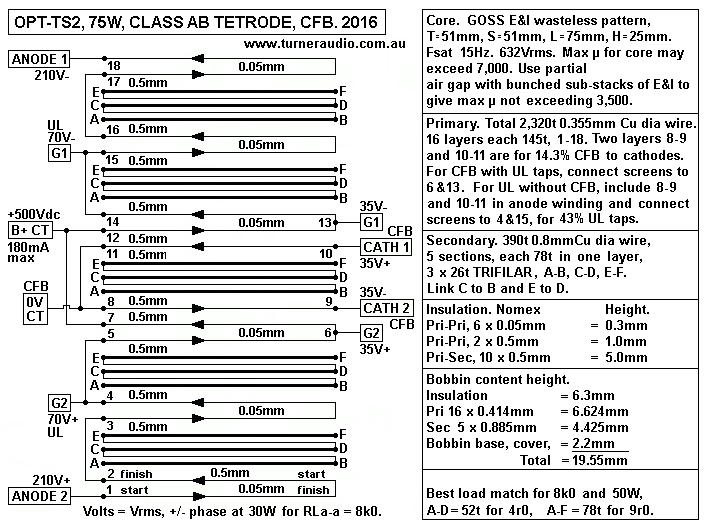| Primary 2,320t Nominal RLa-a |
Sec 51t ZR 2,069 |
Sec 72t ZR 1,010 |
Sec 102t ZR 517 |
Class AB Anode Po |
Class A Anode Po |
| 4k0 |
1r9 |
3r9 | 7r8 |
74W |
5.0W |
| 6k0 |
2r9 |
5r8 | 11r6 |
60W |
7.5W |
| 8k0 |
3r9 |
7r7**** |
15r5 |
48W |
10.0W |
| 12k0 |
5r8 |
11r6 |
23r2 |
35W |
15.0W |
| 16k0 |
7r7 |
15r4 |
30r9 |
26W |
20.0W |



| Nominal RLa-a
Primary 2,320t |
Sec 25t ZR 8,612 |
Sec 50t ZR 2,153 |
Sec 75t ZR 957 |
Sec 100t ZR 538 |
Class AB Anode Po |
Class A Anode Po |
| 4k0 |
0r46 |
1r8 | 4r2 |
7r4 |
72W |
5.4W |
| 6k0 |
0r70 |
2r8 |
6r3 |
11r1 |
57W |
8.0W |
| 8k0 |
0r93 |
3r7 |
8r4**** | 14r9 |
47W |
10.8W |
| 12k0 |
1r4 |
5r6 |
12r5 |
22r2 |
33W |
16.1W |
| 16k0 |
1r8 |
7r4 |
16r7 |
29r8 |
24W |
21.5W |

| Nominal RLa-a
Primary 2,352t |
Sec 26t ZR 8,183 |
Sec 52t ZR 2,045 |
Sec 78t ZR 909 |
Class AB Anode Po |
Class A Anode Po |
| 4k0 |
0r49 |
2r0 | 4r4 |
74W |
5.0W |
| 6k0 |
0r73 |
2r9 |
6r6 |
60W |
7.5W |
| 8k0 |
0r98 |
3r9 |
8r8 **** |
48W |
10.0W |
| 12k0 |
1r5 |
5r9 |
13r2 |
35W |
15.0W |
| 16k0 |
2r0 |
7r8 |
17r6 |
26W |
20.0W |